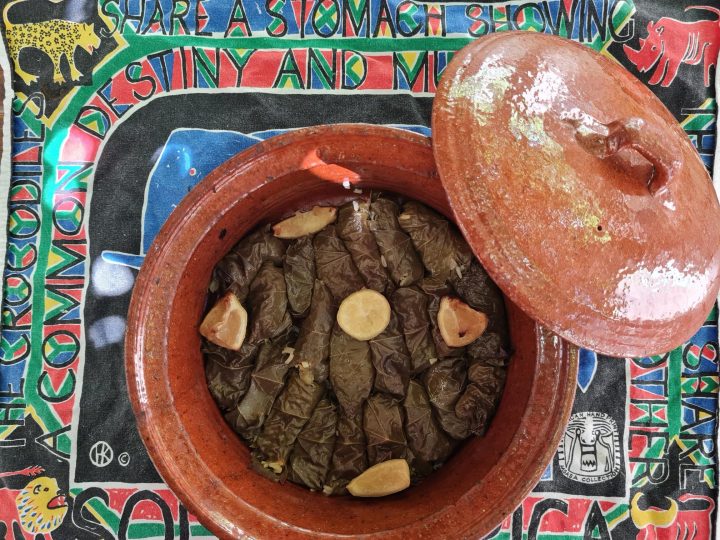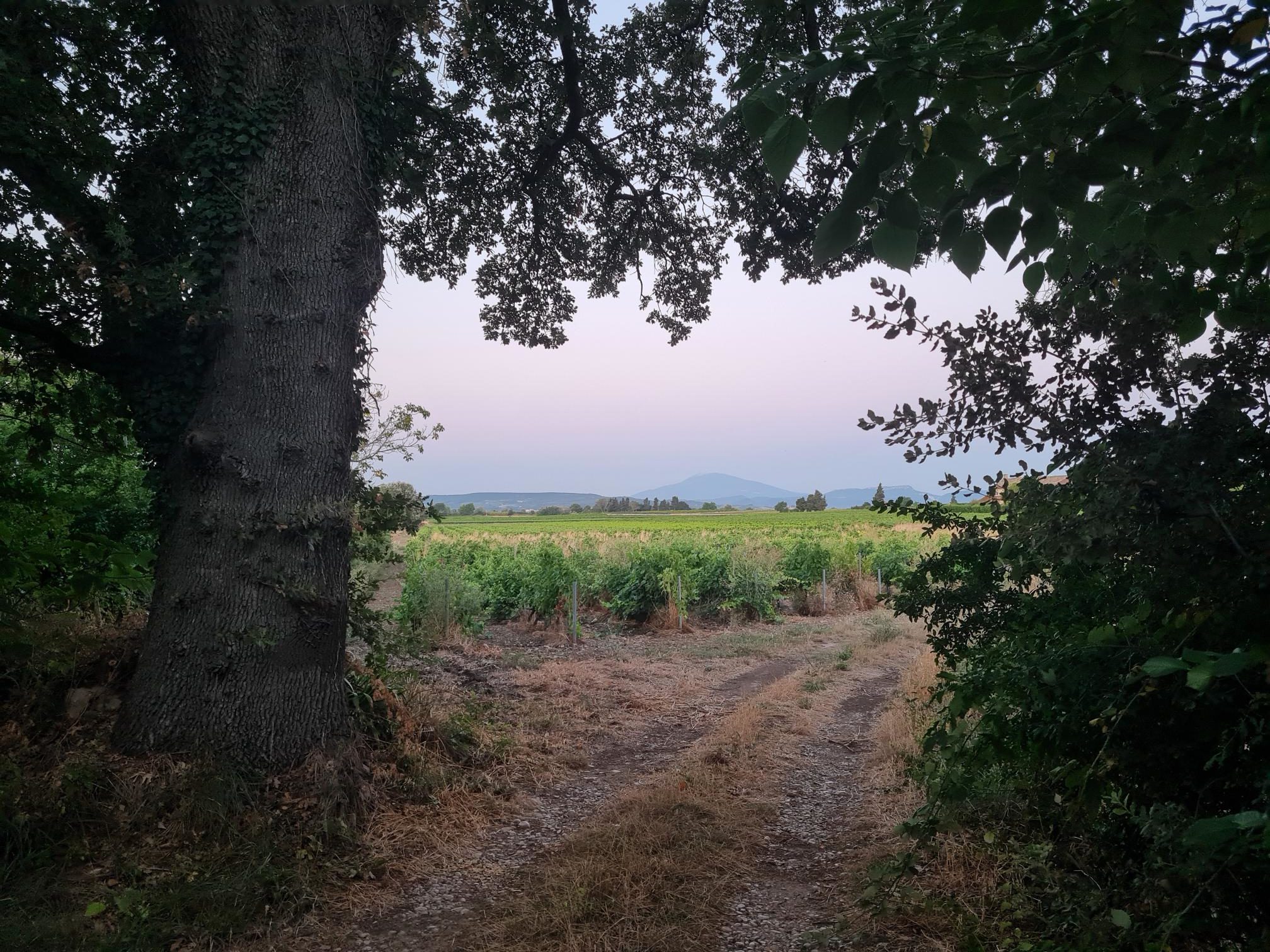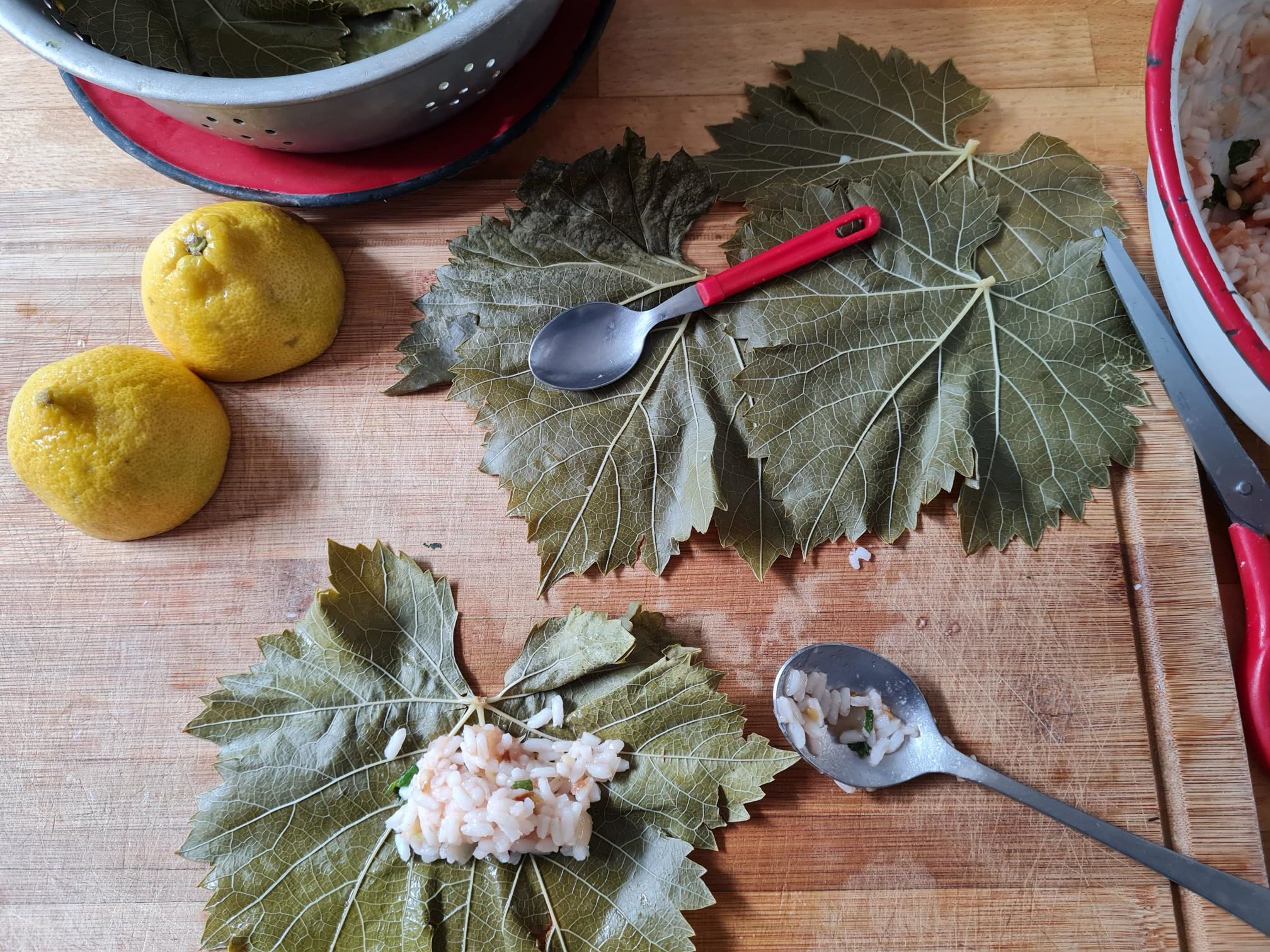FRENCH LETTER
Grapes (and leaves) of gratitude

Isn’t it strange that we often don’t appreciate something right in front of our eyes until it is almost too late? Now that we have to leave our big old house in the countryside for smaller pastures, I look at the surrounding vineyards – and their culinary possibilities – with new eyes.
It is not a case of familiarity breeding contempt. I certainly never regarded the vineyards stretching in all directions, as far as the eye can see, with anything resembling contempt. I know only too well that they are grown to produce the local Côtes du Rhône wines which I love.
And I learned long ago that these grapes are not to be eaten straight off the vine. They are cultivated for the cellar, not the table. Small with thick leathery skins – which give the wines their glorious colours and influence the final aroma and flavour – there is not much left to swallow once you spit out the tough skins.
But somehow I never looked further than the grapes – until last year when my occasional foraging habit became an obsession and I started wondering about the floppy green leaves that are not harvested along with the grapes each September during the vendange, as the harvest is called here. Unwanted, the leaves are left to wither, turning bright orange and fire red and flame yellow in the process, transforming the landscape into breathtaking beauty before they fall off to expose the bare branches.

The sun setting over ‘our’ vineyards. (Photo: Marita van der Vyver)
So surely if I collected a few handfuls of these leaves, I wouldn’t be depriving anyone of food or drink? On the contrary, I could use them in the kitchen, to feed my own family and friends. That is how I started making my own dolmades or dolmakia, as the Greeks call their delicious stuffed vine leaves. I got to know this dish as a student searching for tasty but affordable food in Greek restaurants like Aris Souvlaki in Sea Point, and only later realised that the root of the word actually comes from Turkey, where the verb dolmak means something like “to be filled or stuffed”.
Anyone who enjoys Greek and Turkish food will soon learn that many traditional Greek dishes are also claimed by the Turks, and vice versa, in an eternal culinary contest. So whether you drink Greek coffee or Turkish coffee could simply depend on which country you are in when you drink the exact same coffee.
Nowadays I also know that stuffed grape leaves, called warak enab in Arabic, are part of the rich Lebanese food tradition. And in Egypt and Syria the same thing is called mahshy. And Sephardic Jews have favoured it for ages because it can be prepared ahead of time and served on the Sabbath. In fact, these little stuffed delicacies, whatever you want to call them, are a culinary classic of most Eastern Mediterranean countries.

My walking paths through the vineyards with Mont Ventoux in the background. (Photo: Marita van der Vyver)
Easy to understand, once you’ve tasted them. The filling is rice-based with fresh herbs and lemon, sometimes including tomato, pine nuts and other ingredients, or mince meat for a non-vegetarian option.
What I can’t understand is why it took me almost a lifetime before I tried making my own dolmades. For most amateur cooks the biggest problem would obviously be to get hold of the leaves. In many countries you can’t buy a jar of grape leaves in your local supermarket, and we are not all lucky enough to live among acres of vineyards, as I’ve been for more than a decade.
I saw these desirable leaves waving at me every spring and summer, almost begging me to choose them for my culinary efforts.
None so blind as those who don’t want to see, I suppose.
The only excuse I can think of is that it was probably one of those dishes I assumed would be too time-consuming, too expensive or just too damn difficult for a lazy cook with limited skills. In much the same way as I avoided making the French apéro classic known as caviar d’aubergine for many years because I thought it would be too complicated. Any dish containing the word “caviar” had to be above my means, right?
How wrong can you be.

Another vineyard just outside our front door. (Photo: Marita van der Vyver)
When I finally realised that caviar d’aubergine is in fact ridiculously easy to prepare – you simply insert a few slivers of garlic in the skin of a whole aubergine, bake it in the oven for up to an hour, and blend it in a food processor with a plump ripe tomato and a trickle of olive oil – this scrumptious paste became one of my favourites when guests pitch up unexpectedly in summer.

The collected leaves before they’re boiled. (Photo: Marita van der Vyver)
If I have enough time, I’ll bake more than one aubergine and use some of the paste to make a little savoury loaf called pain d’aubergine. Served with fresh basil leaves and the homemade tomato sauce known as coulis (no, not at all the same thing as ketchup), it is a light and lovely starter for a summer meal.
Now that I’ve discovered the joys of home-made dolmades – healthy, inexpensive and versatile, eaten hot out of the oven or cold the next day – I’m definitely adding them to my list of foods for easy summer entertaining. Or at least for what remains of our last summer in our big old house among the vineyards, because we’ve sold the house and will have to move soon. We don’t know yet where we’ll settle next, but it seems unlikely that we’ll land slap bang in the middle of a landscape of vineyards again.

Dolmades in the making. (Photo: Marita van der Vyver)
Meanwhile I’m appreciating every day before we move, walking in the vineyards and perfecting my leaf-picking skills. Because the trickiest part of making your own dolmades is selecting the right leaves and folding them correctly, tucking in the filling as gently as a mother tucks in a baby on a cold night. Making sure the leaf protects the filling like a blanket covering a baby.
Of course you can’t just forage the leaves in any old vineyard; you have to be sure it hasn’t been sprayed with pesticide to poison potential eaters. Fortunately many of the vineyards around us are now cultivated organically. I always look out for a vineyard with a healthy carpet of weeds as added proof of a more natural way of farming.
And once I find the right vineyard, I still have to choose the most suitable leaves. The smaller, younger ones are softer and easier to fold, but with my original batch of dolmades last year the leaves were too small and the stuffing burst out. With this year’s first try I overcompensated by picking the biggest leaves I could find, which turned out to be too tough to eat even after they had been boiled and baked.
But I live by Becket’s famous words (“Try again. Fail again. Fail better.”) and in the kitchen, when it comes to stuffed grape leaves, I am failing better all the time.
Last week I attempted another batch – and felt as happy as Goldilocks when she tasted Baby Bear’s porridge. The baked leaves were neither too small nor too tough, the filling stayed inside, the small oblong parcels were neither too stiffly rolled nor too floppy, everything was just right.
Practise makes perfect, they say. I don’t believe my dolmades will ever look perfect, but as long as they taste good, nobody is complaining. And I have a few more weeks to practise before we leave our home in the vineyards. DM/TGIFood
The author supports Ladles of Love, an NGO feeding the hungry and providing healthy food in Cape Town. You can support them here LadlesofLove.





 Become an Insider
Become an Insider
Thank you for this submission. As I live in KZN grape leaves are as scarce as hens teeth! However I will try something else and hope it, too, will be a better failure.
Go well into the next step of your journey. As the Irish are won’t to say “May the road rise up to meet you and may God hold you in the palm of His hand